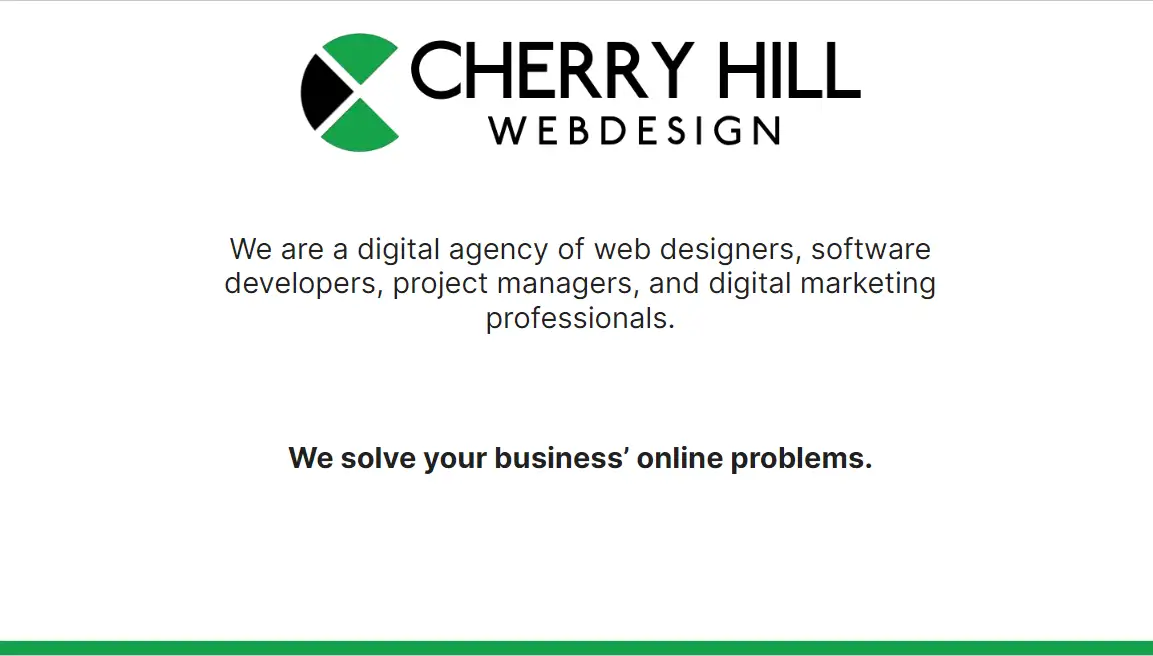
Website Design for Business: Boost Your Professional Image
Creating a business website can be a game-changer for any company looking to enhance its online presence. The right design ensures users have a smooth and engaging experience, increasing the likelihood of converting visitors into customers. A well-designed website is crucial for establishing credibility and reaching a broader audience.

Businesses should focus on organizing their web pages clearly and consistently. This structure not only keeps the visitors engaged but also makes it easier for them to complete tasks, such as making purchases or finding information. Using responsive design ensures that your site looks great on any device, making it accessible to more users.
Integrating features like SEO tools can make a huge difference in how easily potential customers find your website. Platforms like Squarespace and Wix offer customizable templates and tools that simplify the website creation process. These features help small businesses stand out in search results, attract new customers, and grow online effectively.
Key Takeaways
- A well-designed website boosts credibility and audience reach.
- Clear and consistent organization enhances user engagement.
- SEO tools and responsive design are essential for business growth.
Establishing a Strong Foundation

Creating a robust foundation for a web design business is essential. It involves choosing a reliable domain and hosting service and mastering the fundamentals of web design to ensure quality, performance, and security.
Choosing the Right Domain and Hosting
Selecting the right domain is critical for branding and visibility. A domain should be short, easy to remember, and relevant to the business. Avoid complicated spellings or numbers that can confuse potential visitors.
Web hosting is another crucial factor. Choose a hosting provider that offers reliable uptime, excellent customer support, and adequate resources. Shared hosting might be budget-friendly, but for better performance and security, consider VPS or dedicated hosting. SSL certificates are a must for securing data and improving SEO. Look for hosting plans that include automated backups and scalability options to handle traffic growth.
A strong combination of the right domain and hosting improves site speed, security, and user experience.
Understanding the Basics of Web Design
Fundamental web design skills are essential for creating a user-friendly and aesthetically pleasing site. Focus on these core elements:
- Layout: Use a clean, organized layout to ensure easy navigation.
- Typography: Choose readable fonts and maintain consistency.
- Color scheme: Select a color palette that reflects the brand identity but also ensures good readability.
Performance is also key. Optimize images and use efficient coding practices to reduce loading times. Responsive design ensures the site looks great on all devices, improving accessibility.
Security should not be overlooked. Implement secure coding practices, regular updates, and monitoring to protect against cyber threats. Understanding these basics enables designers to build effective and secure websites that perform well across different devices and conditions. For more detailed guidance, check out this comprehensive guide on starting a web design business.
Designing for Success

A successful website design focuses on creating visual appeal while improving user experience and engagement. Designing a user-friendly layout and incorporating effective visual elements are vital for driving traffic and converting visitors.
Creating a Visually Appealing Website
Design and visual aesthetics play a key role in capturing the visitor’s attention. A clean layout with ample white space ensures a clutter-free view. Using brand colors consistently enhances brand identity. For instance, an e-commerce site might use signature colors to make key buttons stand out.
Proper fonts contribute to readability. It’s advisable to stick to web-friendly fonts and sizes to ensure text is legible across devices. Designers are encouraged to use responsive design features so that the website adapts seamlessly to different screen sizes.
Visual elements like high-quality images and videos add interest. Impactful visuals should be relevant to the content and should load quickly to avoid frustrating the user. Customizing visuals to align with the brand’s identity increases coherence and memorability.
Improving User Experience and Engagement
User experience (UX) should be a priority to keep visitors engaged. Easy navigation through a well-organized menu enables users to find what they need without hassle. A clear, intuitive layout with logical flows helps in this aspect.
Responsive design is crucial. A website must be mobile-friendly, ensuring that all content is easily accessible on smartphones and tablets. Responsive design features improve the user experience as they provide a consistent look and functionality across devices.
Interactive elements like buttons, forms, and call-to-actions (CTAs) should be distinct and easy to interact with. Using engagement tools like chatbots or contact forms can also elevate user interaction, making it easier for visitors to connect with the business. Choices like these ensure a smoother user journey, increasing the likelihood of returning visitors and higher conversion rates.
Consider the load time. A website that loads quickly retains visitors and decreases the bounce rate. This involves optimizing images, leveraging browser caching, and minimizing HTTP requests.
Combining these elements thoughtfully makes a website not just aesthetically pleasing but functional and engaging, leading to business success.
Maximizing Online Presence

Businesses looking to expand their digital footprint should focus on improving SEO and leveraging social media along with a solid content strategy. These efforts can help drive traffic and attract potential customers to their sites.
Optimizing for Search Engines
To rank higher on search engines, mastering SEO is key. Implementing appropriate keywords throughout the website—particularly in titles, headers, and URLs—can boost visibility. Using SEO tools like Google Analytics helps track performance and spot opportunities for improvement.
A clean, easy-to-navigate design can improve rankings, especially if paired with fast loading speeds and mobile-friendliness. Adding a blog provides more content that search engines can index, increasing the number of opportunities for the site to appear in search results.
Optimizing images and videos also matters. Ensure they have descriptive file names and include alt text to assist search engines in identifying the content. Properly managed analytics inform adjustments for better results.
Integrating Social Media and Content Strategy
Combining social media with a robust content strategy can significantly enhance online presence. Regularly updated social media profiles help keep the audience engaged and drive traffic back to the website. Effective use of platforms like Facebook, Twitter, and Instagram can spread word-of-mouth about products or services.
Sharing high-quality content—like blogs, videos, and infographics—on social media increases chances of reaching a broader audience. Interactive content, such as Q&A sessions or live videos, can attract even more engagement.
Using e-commerce features, like Instagram Shopping or Pinterest Buyable Pins, enables quick transitions from social media posts to purchases in an online store. Tracking engagement and performance through social media analytics further refines these strategies, ensuring content remains relevant and targeted.
Leveraging E-commerce Capabilities

E-commerce is essential for modern businesses. Key areas include building user-friendly online stores and ensuring smooth shopping processes.
Building an Effective Online Store
A well-designed ecommerce website is crucial for any ecommerce business. It should have a clean layout, easy navigation, and high-quality images. Organizing product catalogs clearly helps users find what they need quickly. Customer service options, such as live chat and FAQ sections, can improve user satisfaction.
Incorporating features like payment gateway integration and secure checkout processes builds trust with customers. Brands must also focus on SEO strategies to increase visibility and attract more visitors. Using mobile responsiveness ensures the store is accessible on various devices, expanding the customer base.
Streamlining the Shopping Experience
Efficient ecommerce business operations involve making the shopping and checkout process smooth. Offering free delivery and multiple shipping options can improve customer satisfaction. Implementing fast payment methods and a streamlined checkout process reduces cart abandonment rates.
Flexible return policies and quick refunds are other important aspects that can build customer loyalty. Automated systems for managing orders and scheduling deliveries can enhance productivity. Ensuring that the entire process, from browsing to post-purchase support, is seamless helps in building a strong online portfolio and retains customers.
Frequently Asked Questions

Effective website design for business involves incorporating essential elements, ensuring user-friendly features, staying updated with trends, determining the timeline, choosing the right design approach, and adopting best practices for responsiveness.
What are the critical elements to include in a small business website design?
A small business website should have a clear call-to-action, contact information, and a detailed product or service description. Including customer testimonials and a blog can enhance credibility. An intuitive navigation menu is also crucial for a good user experience.
How can I ensure my business website design is user-friendly and engaging?
Simplify navigation with clear menus and a straightforward layout. Use high-quality images and easy-to-read fonts. Interactive elements like chat features and customer reviews can engage visitors. Fast loading times and mobile responsiveness are key to user satisfaction.
What are the latest trends in business website design that I should consider?
Consider incorporating minimalist design, dark mode, and micro-interactions. Video backgrounds and bold fonts are also popular. Staying updated with trends ensures the website looks modern and engaging.
What is the typical timeline for designing and launching a small business website?
The timeline to design and launch a small business website typically ranges from a few weeks to a few months. Factors include the complexity of the design, the number of pages, and the need for custom functionalities. Setting clear milestones helps manage expectations.
How do I choose between a DIY website builder and hiring a professional web designer?
Choosing between a DIY website builder and a professional web designer depends on your budget and design needs. DIY website builders are cost-effective and user-friendly but might limit customization. Hiring a professional offers a tailored approach but often comes at a higher cost.
What are the best practices for creating a responsive design for my business website?
Ensure your website adjusts seamlessly to various screen sizes. Use flexible grids and images, and test the design across different devices. Prioritize mobile responsiveness as more users access websites on smartphones and tablets.






















